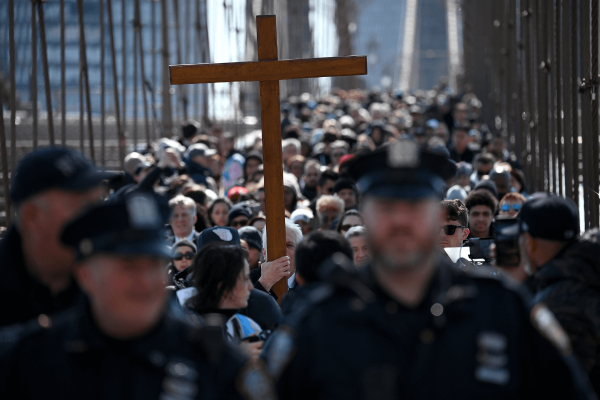“When people completely surrender their free will to some leader … it opens the prospect that they can do things that seem completely inexplicable,” Oregon Deputy Attorney General William F. Gary says, in the Netflix documentary Wild Wild Country.
He should know: As part of the state’s Department of Justice, Gary worked on what was at the time the largest poisoning case, the largest wiretapping case, and the largest case of immigration fraud in the United States: Bhagwan Shree Rajneesh and the Rajneeshpuram community in central Oregon.
Wild Wild Country follows Indian spiritual guru Rajneesh (popularly known as Osho), his secretary Ma Anand Sheela, and his commune to explore these themes of will and intent.
Antelope was an sleepy conservative Christian town in 1981, when a group of followers of the Bhagwan bought Big Muddy Ranch, a rugged piece of land in Antelope, Ore., with rolling hills stretching to 60,000, acres. U.S. law allows any group of citizens numbering more than 150 to create their own city, and so, as more people in reddish-saffron clothing moved in, Rajneeshpuram began to take form.
The people of the community were idealists: They believed that they were creating a simple, shared space where love and compassion could grow. They worked 16-hour shifts, building roads and laying pipelines and electric grids to build the town. The community soon became self-sufficient, with their own farmland and modern agriculture. They even took in homeless people and ex-offenders, in an attempt at restoring respect.
But outsiders, especially conservative Christian neighbors, considered the Rajneeshees a threat. In Wild Wild Country, we see Osho speak to his followers of “an awakened man,” and meditation as a means of attaining higher levels of awareness. His seemingly revolutionary way to sainthood, which rested on being spiritual without having to isolate or reject human needs, had a profound effect on his devotees, and soon his stature grew to resemble that of a rockstar. Neighbors around Rajneeshpuram felt they were being too quickly outnumbered. And they were — they lost elections, as well as the city council.
Things soon got out of hand.
In 1983, a culprit unknown to this day, bombed a hotel occupied by Rajneeshees. There were no serious casualties, but the incident made the Rajneeshees wary. They in turn began equipping themselves with firearms and training for self-preservation.
What happens when an unconventional group of people come together in shared ideals toward a particular faith, and in doing so, bring their practices out into public air, leaving room for open clashes with other faiths?
For Ma Anand Sheela, Osho's secretary, it meant building influence through a narrative of power. At Sheela’s behest, the devotees went to all lengths necessary to secure Rajneeshpuram. They bussed homeless people into the town, and contaminated local food joints with salmonella in an effort to influence the local election. When Sheela “perceived” a threat to Osho’s life, she ordered the targeted killing of her prime suspect.
Her voice and command, both within the community and outside, grew louder. And while the Rajneeshees continued to hold her in high regard, the townspeople came see her as a vicious troublemaker.
“Rajneeshpuram is a big living opera,” Sheela says in the film. “Operas are, at the end, always tragic. But there were so many facets, so many dimensions in this opera.”
Encoded in the U.S. Bill of Rights is the belief that while governments must be secular, communities are free to practice any faith they wish to uphold. But in Antelope, freedom of religion came on a condition of familiarity — people only accepted what they knew, while everything and everyone else was seen as a threat.
And I wonder, would bigotry have ever played the lead if Osho’s teachings were Christian in nature? Would any of this have played out the way it did if Rajneeshees weren’t viewed as being “the other?”
Strangely the site of Rajneeshpuram is now a Christian Young Life camp where kids arrive each summer to learn about Jesus Christ.
“After the Rajneeshees left … a billionaire developer from Montana … bought the ranch and ended up gifting the thing to Young Life. They call them camps. It’s more like a resort to me … it’s kind of like a cult, too,” John Silvertooth, the then mayor of Antelope, says.
“They’re not perfect. But they’re much better neighbors than the Rajneeshees.”
But Ma Anand Sheela remains unapologetic to this day.
"I would like to say, ‘People of Oregon… think yourselves lucky that this opera came your way,’” she says.
Got something to say about what you're reading? We value your feedback!







